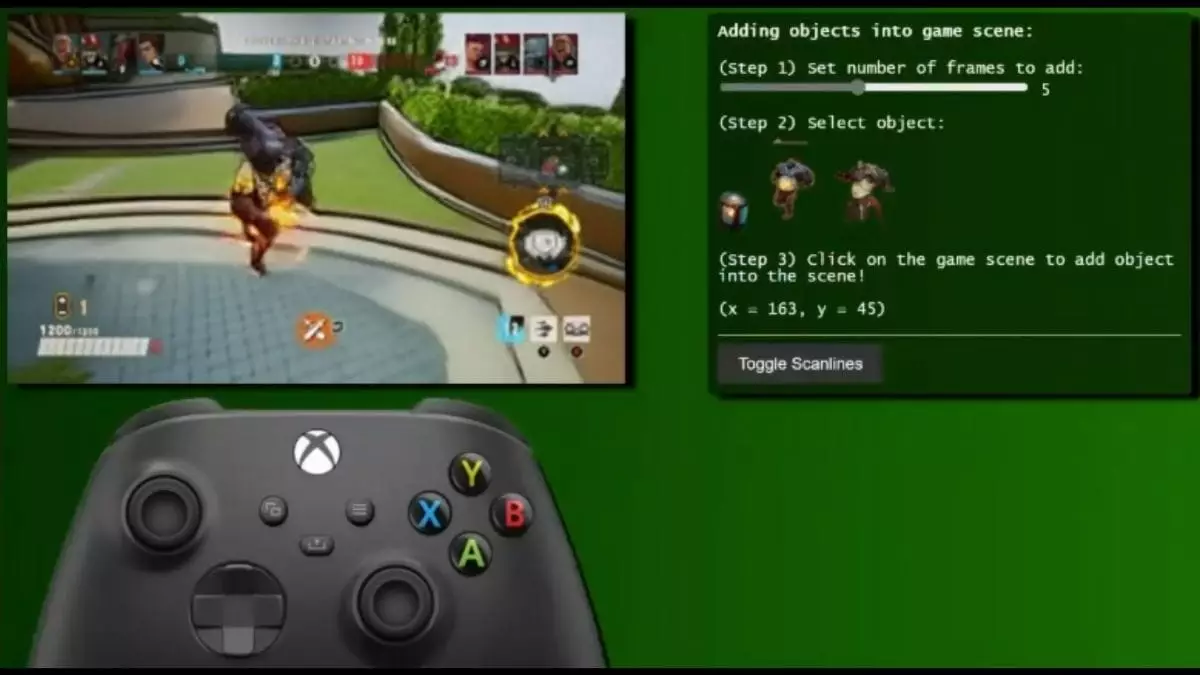Last week, Microsoft unveiled an intriguing but flawed experiment in the realm of interactive experiences: an AI-controlled version of the iconic *Quake II*, developed through its Copilot Labs. The tech behemoth has invoked the Muse AI models alongside its fresh WHAMM (World and Human Action MaskGIT Model) approach to provide players with an immersive yet imperfect gaming trek through a digital battlefield. While the endeavor carries the promise of innovation, it also raises significant concerns around the efficacy and reliability of AI technology in gameplay settings.
The allure of AI-generated gaming experiences has captivated researchers and enthusiasts alike due to its potential to showcase real-time world generation and adaptability based on player interactions. *Quake II*, a classic first-person shooter from 1997, is an ambitious choice for this technological showcase, combining nostalgic appeal with advanced AI. However, despite the exploratory nature of this project, it quickly becomes evident that limitations abound in the gameplay experience.
The Disconnect Between Promise and Performance
Microsoft’s AI-driven attempt at recreating the essence of *Quake II* falls short in addressing several critical limitations. While players can engage with the demo for roughly two minutes, they soon encounter irregularities that disrupt their engagement. The promise of real-time gameplay with an AI twist is marred by fuzzy image generations and erratic enemy interactions, detracting from what should be a seamless and thrilling experience. The AI’s inability to replicate combat fluidity or accurate world dynamics is startling and raises fundamental questions about the viability of AI in gaming—even with state-of-the-art tools like WHAMM at its disposal.
Another significant downside is the model’s apparent memory limitation. With a mere 0.9-second context window, the AI struggles to maintain coherence when players change their viewpoint. Turning around can spawn entirely new areas of the game, which not only fosters confusion but inadvertently diminishes the game’s overall immersion. This is particularly troubling when considering the legacy of *Quake II*, a game renowned for its fast-paced dynamics and engaging environments. Here, nostalgia is discarded in favor of freakish unpredictability, a symptom of AI’s ongoing struggle to grasp environmental continuity.
Technical Intricacies: Where Innovation Meets Pitfalls
The WHAMM system, a supposed leap from its predecessor WHAM-1.6B, boasts noteworthy advancements in speed and processing power. However, as one delves deeper into the technical intricacies, it becomes apparent that the enhancements may not be worth the trouble. The original resolution of 640×360 pixels can only do so much to buoy the experience, especially when high-definition gameplay has become the standard. Coupled with lag due to its current beta status, this venture transforms from a groundbreaking experience into a troubling affair marred by technical shortcomings.
Microsoft’s pursuit of a gaming experience shaped by machine learning lays bare the complex relationship between human creativity and artificial intelligence. While WHAMM’s capacity for generating frames has notably improved—growing from one frame per second to over ten—this jump in speed does little to ameliorate the overwhelming issues players face. The claim that the AI can learn and adapt to show varied moves in real-time sounds more promising than it ultimately manifests in practicality.
Implications for the Future of Gaming
Herein lies a critical crossroads for the gaming industry: how much reliance should we place on artificial intelligence in crafting engaging experiences? As Microsoft pushes the envelope with its Copilot Labs ventures, it simultaneously highlights the shortcomings of current AI capabilities. It becomes evident that while technology like WHAMM heralds a bright future for interactive gameplay, the current manifestation of AI in games remains mostly experimental at best and infuriatingly flawed at worst.
The aspiration for seamless integration of AI-generated worlds into beloved franchises raises ethical and practical questions about authenticity in gaming. Nostalgia for classics like *Quake II* necessitates a delicate balance—a summoning of the past while still innovating for the future. However, if current AI endeavors are indicative of what’s to come, one must ponder if players are ready or willing to embrace a future that risks sacrificing immersion and enjoyment for the sake of technological novelty.


Leave a Reply